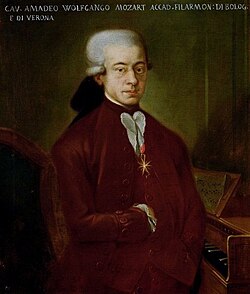
Sonata for Piano and Violin No. 21 in E minor (K. 304/300c) is a work by Wolfgang Amadeus Mozart. It was composed in 1778 while Mozart was in Paris. The piece was composed during the same period that Mozart's mother, Anna Maria Mozart, died, and the sonata's mood reflects this. It is the only instrumental work by Mozart whose home key is E minor [1] and the one of three violin sonatas that he wrote in a minor key (the others are: K. 59 and K. 60), though they are spurious.
- Allegro (in E minor)
- Tempo di Menuetto (in E minor)
Martin-Joseph Mengal arranged the two movements to wind quintet and incorporated them in his Quintetto tiré des œuvres de Mozart.
